A few months ago, I was watching Chris Kimball of Milk Street discuss why slicing garlic is better than mincing it. I’ve been doing that for a while since it’s faster, doesn’t get the cutting board as garlicky, and the sliced garlic doesn’t burn as quickly as minced garlic does when you sauté it.
According to him (and a well-regarded chef I worked with), the more you mash or manipulate garlic, the more of its bitter flavors are released. It seemed like a pretty innocent and, perhaps, helpful tip to share.
Viewers chimed in with comments, such as “He has always been on a war with garlic for decades,” which I never noticed in all the years of reading his books and magazines. Flipping through the index of the book that I made this recipe from, most of the recipes don’t shy away from garlic: The ingredient list for ratatouille recipe has 8 cloves of garlic and the chili chicken tacos have 5 cloves. If he’s at war with garlic, he’s very sympathetic to the enemy.
I was a guest on Milk Street once and spent a day with Mr. Kimball in their studio in Boston, taping an episode of his TV show. I also met the test kitchen team, who were really great and very accomplished cooks, which is crucial if you’re working in a test kitchen on recipes that will appear in print, because you can’t go back and fix them once the ink is dry, and the magazines get sent out.
It’s been interesting to see how Chris Kimball has veered from standard American recipes in his previous magazine, Cook’s Illustrated, to delving deeper into cuisines that might be lesser known, as he does in his book Milk Street Tuesday Nights. The concept of the book invites readers to “Look at cooking elsewhere in the world…” with recipes that can be made relatively quickly, most in less than 30 minutes.
I know I’ve turned the pages of a cookbook where the recipes sounded interesting, but I’d have to go on a scavenger hunt to find the laundry list of spices, or scour the far corners of Paris, in search of a specific ingredient. While it’s true the internet has made finding things easier, sometimes I just want to make dinner tonight.
The recipes in the book riff on everything from Chettinad, a chicken curry from India, Pao Fan, a rice soup from China, Rujak, a fried tofu dish enjoyed in Indonesia, Singapore, and Malaysia, a Macanese hash called Minchi, and Chupe de Quinoa, a Peruvian quinoa soup spiked with chilies.
This recipe, called Rigatoni with Roman Broccoli Sauce, reminded me of when I worked with a very talented chef with Italian American credentials who made long-cooked broccoli, which he cooked for over an hour. It wasn’t photo-friendly, but it was tasty, even for someone like me was used to thinking that broccoli is “perfectly cooked” when it still has a little bit of a crisp texture after being steamed or boiled.
Despite the stereotypes about Americans, many of us love vegetables, and we like them cooked crisp. (Back in the day, I heard a few chefs in France refer to vegetables served with texture as “American style.”) But here, you want to cook the broccoli well so it makes a creamy sauce, with rubbly bits of texturally recognizable broccoli strewn through the pasta.
There are various kinds of pestos. I’ve made pesto with everything from dandelion leaves and radish leaves to fresh mint and wild garlic. The word “pesto” means pounded or crushed, but nowadays many folks use a machine to make it rather than pounding their pesto in a mortar and pestle, even Italians.
(I recently read an interesting recipe by Paolo Laboa, a Genovese chef who uses a chilled blender. I never had enough room in my freezer to chill a blender jar so I haven’t tried it—but if you’ve given it a go, let me know in the comments.)
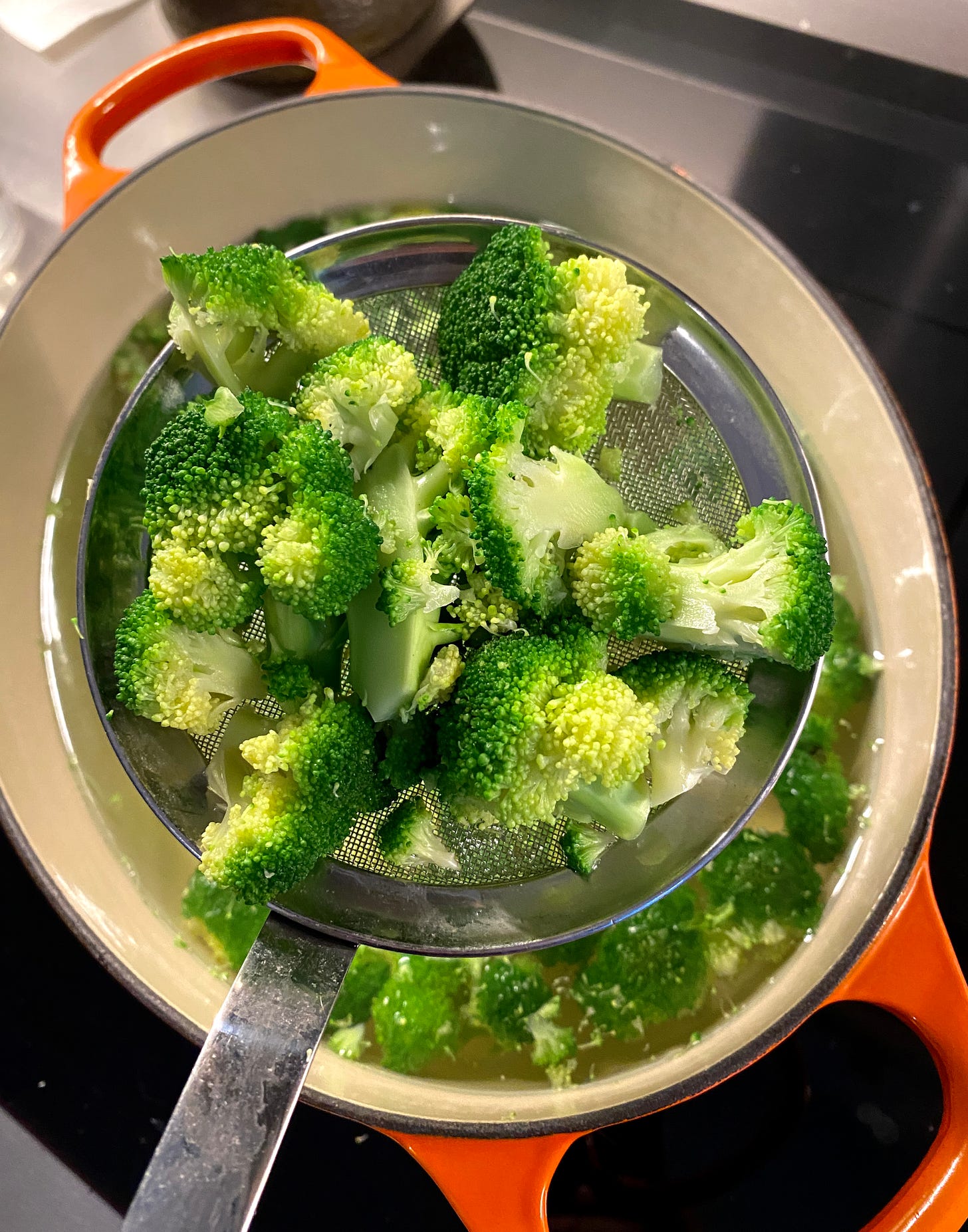
A little spinach is added to this pesto to keep the color vivid, and I added anchovies to mine, as well as a squeeze of lemon juice at the end to brighten the flavor. If anchovies are a recipe “deal-breaker” for you or your family, take note that no one will notice them in the sauce. (If they do, just blame me.) The anchovies give the sauce a deeper, more intriguing flavor, but you can skip them out since they blended into the sauce and can’t be fished out.
Pasta with Broccoli Pesto
Adapted from Milk Street Tuesday Nights by Christopher Kimball
Four servings
This is a one-pot (plus a blender or food processor) dinner, and I find it easiest to make if I prepare all the ingredients in advance and have them ready to go, known in France as a mise en place (aka: having everything in place). And I recommend reading the recipe all the way through before starting out.
You’re using the same large pot of water at a moderate boil to cook everything, so don’t drain and toss the water out until you reserve some of the cooking water in two parts of the recipe, which I’ve highlighted in bold as they’re easy steps to omit.
I added a few anchovies to the original recipe, which you can’t really taste but give a nice bit of umami (deliciousness) in the background. Skip the anchovies if you wish or if you want to keep it vegetarian.
A few more tips:
-Go for thick-stemmed broccoli as the stem is the base for the sauce.
-Resist the urge to undercook the broccoli florets.
-Who doesn’t love garlic? I certainly do. The original recipe called for 2 cloves, and I bumped it up to 3. But I would avoid going too heavy on it as it’s nice to give the broccoli a chance to shine. Italian cooking legend Marcella Hazan urged cooks to use garlic as a “shadowy presence” in a dish, but that it should “not take over the show.”
-Although the recipe is designed to be made and served right away in less than 30 minutes, if you want to make some of this ahead, you could do everything through step #4.
-Note that you’ll need to save 1/2 cup of water from cooking the broccoli stems to add to the “pesto” in the blender, and 1/4 cup of water to finish cooking the pasta with the broccoli and pesto in the final step. The pasta water is rich in starch and helps bind the pasta with the sauce.
3 medium garlic cloves, peeled and sliced
4 tablespoons (2 ounces, 55g) salted or unsalted butter, cut into cubes
1 tablespoon drained capers
1/2 teaspoon red pepper flakes or 1/2 teaspoon Italian jarred crushed chilis
3-4 anchovy fillets, optional
4 teaspoons freshly grated lemon zest, divided, plus a little lemon juice for finishing the pasta
2 tablespoons, plus 3/4 teaspoon kosher or sea salt (if using finely granulated salt, cut the amount in half)
1 pound (450g) fresh broccoli
2 cups (1 1/2 ounces, 40g) gently packed baby spinach
Freshly ground black pepper
12 ounces pasta with ridges, such as rigatoni or penne rigate
1/2 cup (1 ounce, 30g) grated Parmesan or pecorino cheese, plus more for serving
To make the pasta sauce/pesto, put the garlic, butter, capers, red pepper flakes or crushed chilis, anchovies (if using), 2 teaspoons of lemon zest and 3/4 teaspoon of salt into the blender.
Slice the stems off the broccoli, cutting as close to the base of the florets as possible. Use a paring knife or vegetable peeler to peel the stems and cut the stems crosswise into 1/2-inch-thick (2cm) rounds.
Cut the broccoli florets into 1-inch (3cm) pieces and set those aside to cook later.
Heat 4 quarts (4l) of water in a large pot with 2 tablespoons salt. When the water boils, add the sliced broccoli stems and cook until very tender, about 10 to 12 minutes. Add the spinach and cook for 15 seconds. Remove the broccoli and spinach with a slotted spoon and place them in the blender with the other ingredients. Add 1/2 cup (125ml) of the broccoli cooking water.
Blend all the ingredients until smooth. Taste and season with salt and pepper, if desired. Set aside.
To finish the pasta, cook the broccoli florets in the boiling water until they are just cooked through, but with just a little bit of texture left in them. Mine were good at 9 minutes. Remove the cooked florets with a slotted spoon, put them in a colander, and run under cold water to stop the cooking, if you want. Transfer the florets to a small bowl but keep the colander handy.
Add the pasta to the boiling water and cook until it’s slightly al dente. (Check the package for recommended cooking time.) Reserve 1/4 cup (60ml) of the cooking liquid, then drain the pasta.
Add the pasta back to the pot along with the broccoli pesto, the 1/4 cup of cooking water, the remaining 2 teaspoons of lemon zest, and the grated cheese and cooked broccoli florets.
Cook over medium heat, stirring, until everything is well combined and the sauce thickens a bit, 1 to 2 minutes, seasoning with a few drops of fresh lemon juice to brighten up the flavor. Taste, and add more salt and pepper, if desired.
Serve the pasta with grated cheese over the top.
Variations & Notes
You could toss some halved cherry tomatoes to the finished pasta, in step #6, or add slices of cooked sausage for meat-eaters. Bacon, fresh corn, sautéed mushrooms, or other additions could be added.
While I didn’t do it here, this pasta would be a great candidate for topping with toasted breadcrumbs to give it some texture. To make them, put breadcrumbs in a skillet. Moisten them with just enough olive oil to saturate the crumbs. Heat the crumbs over medium heat, stirring frequently so they don’t burn, until they just start to get toasty. Add a minced garlic clove (minced works better than sliced here), and a bit of fresh thyme if you have some on hand, and continue to cook, stirring constantly, until the crumbs are crisp. Transfer to a dinner plate to cool until ready to use.
This post is for all subscribers. Thanks for subscribing!






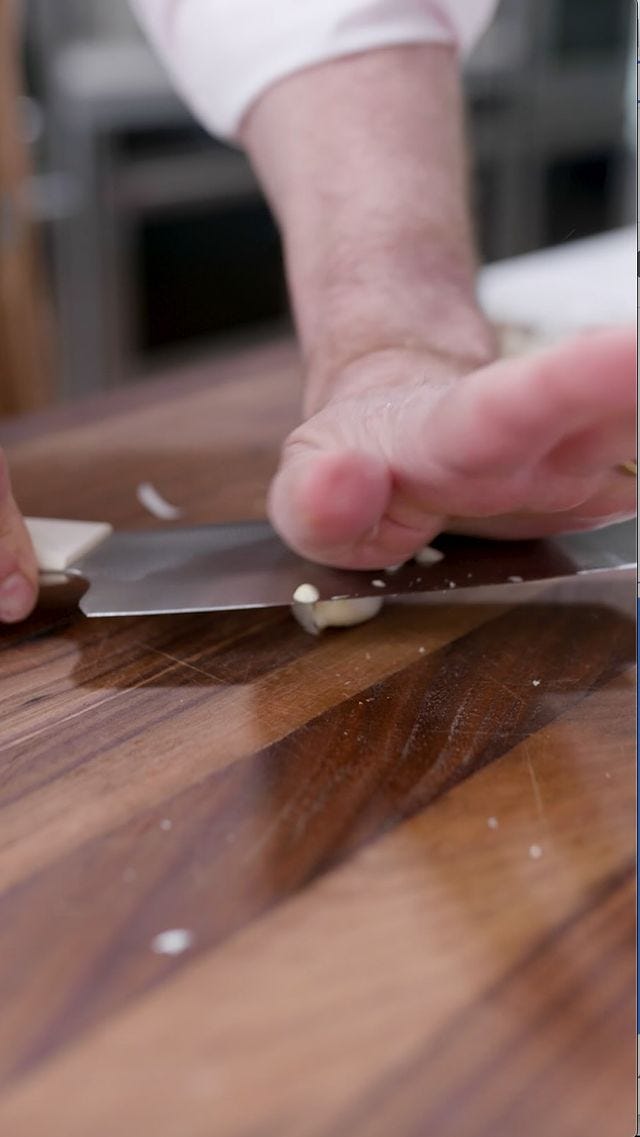

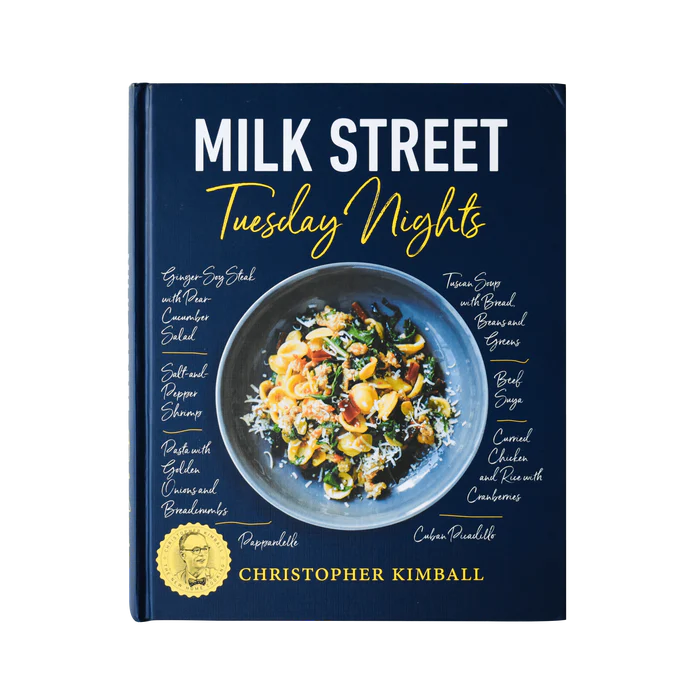
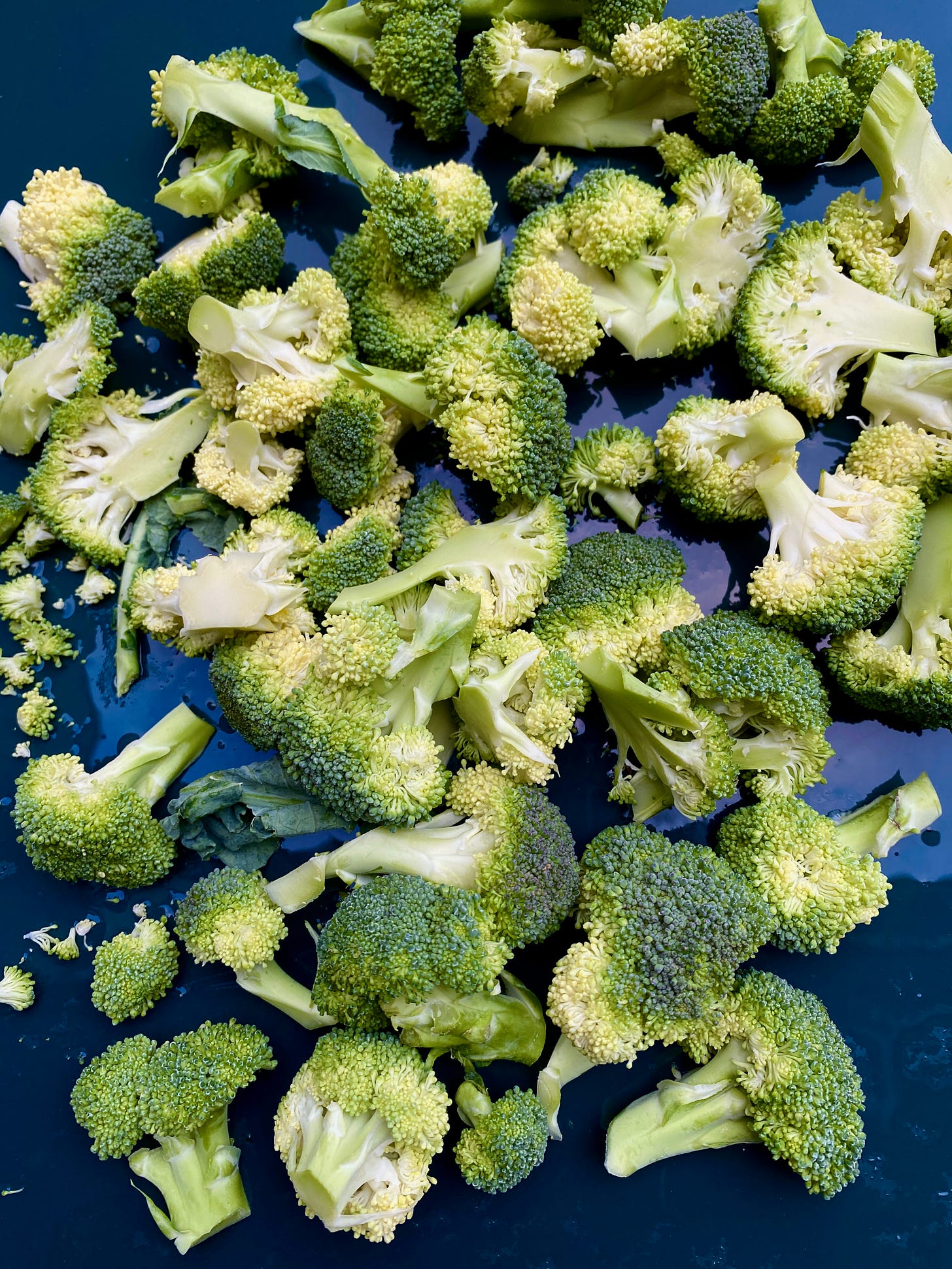
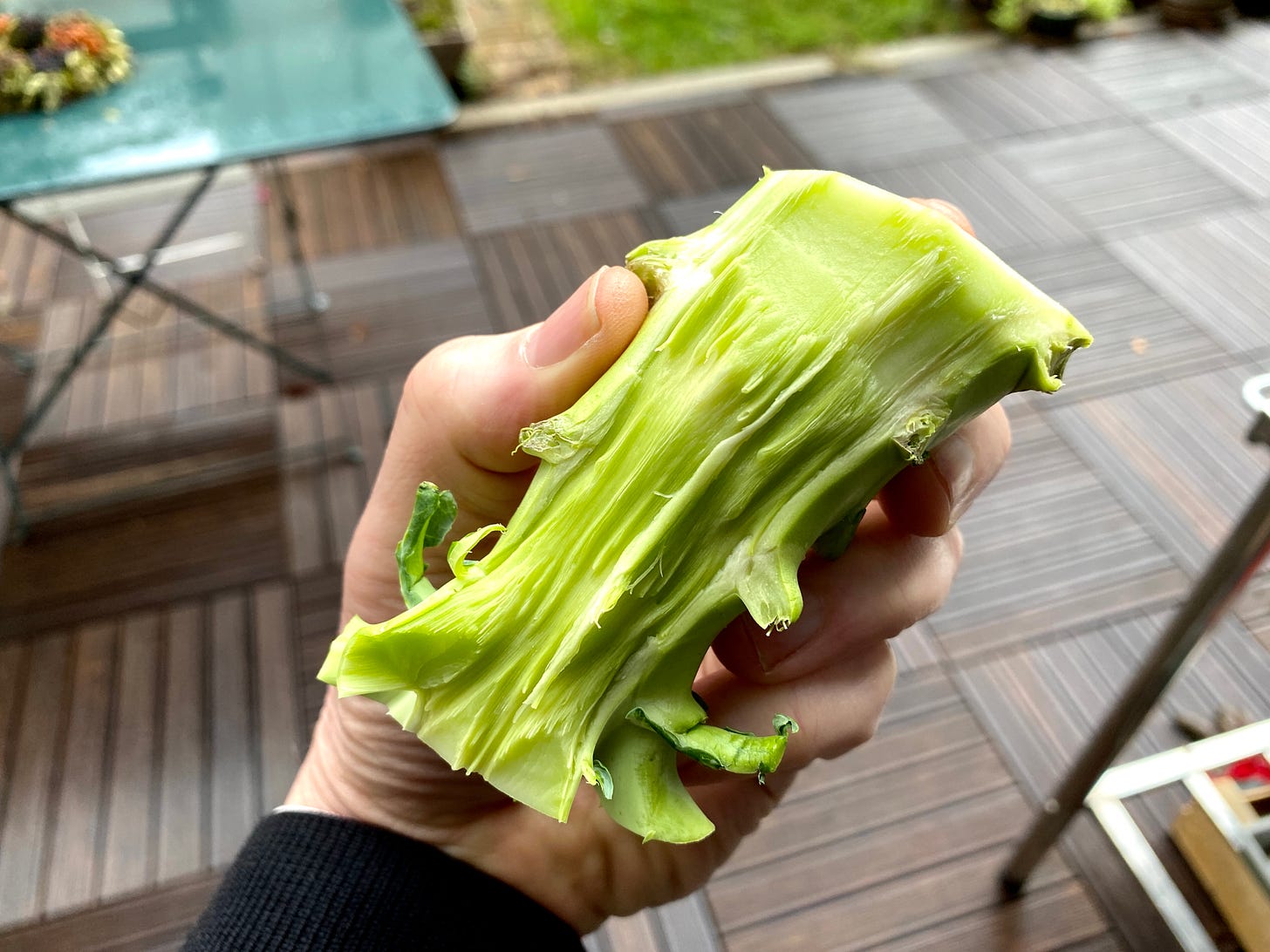
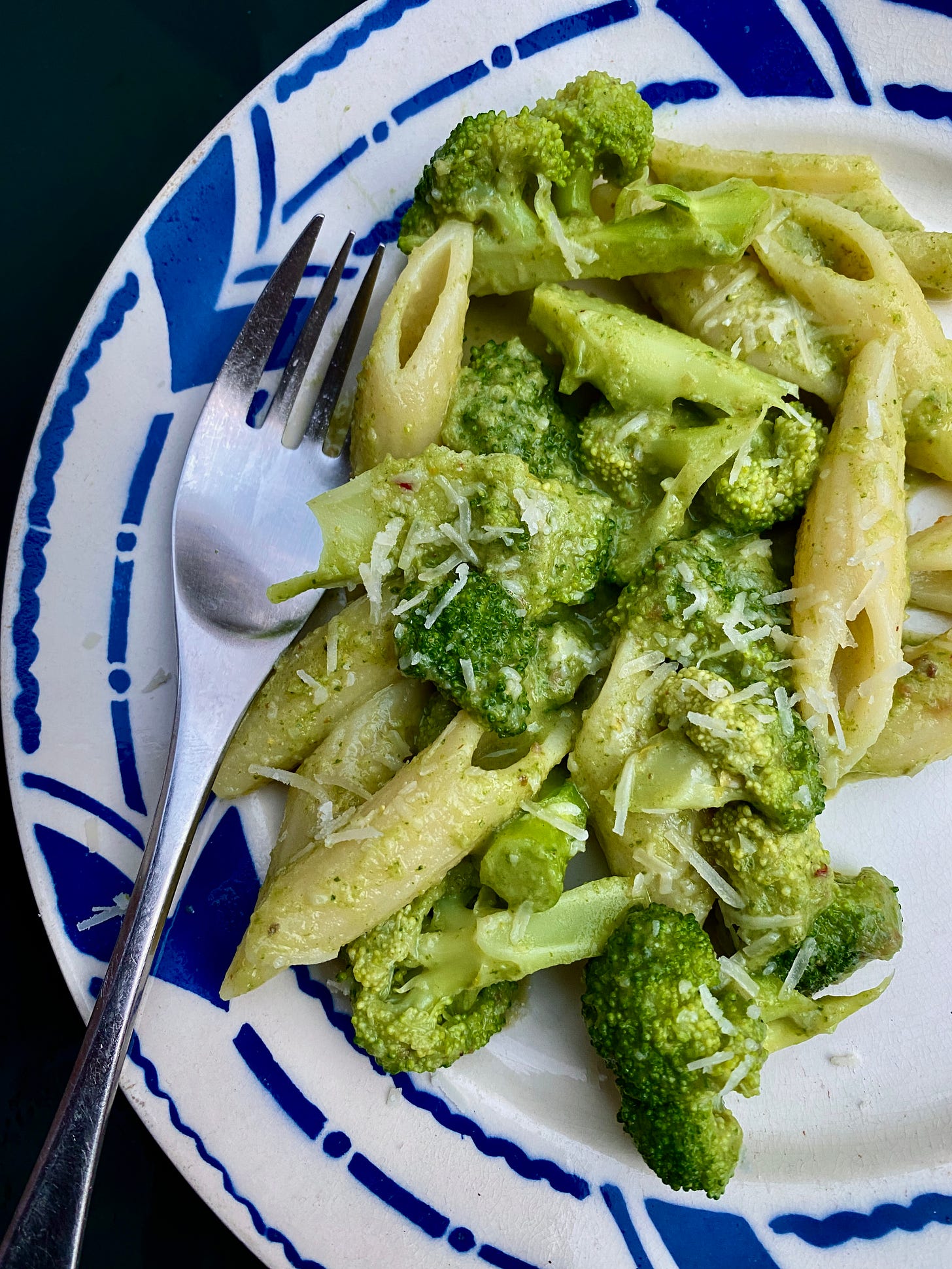


This sounds delicious. As to the crisp vegetables, in our family's cooking, many vegetables were cooked until soft deliberately because they were cooked on the stove for a few hours, or to save time, in a pressure cooker: green beans, ham and potatoes, various greens cooked way down with "pot likker", etc. When kale went popular, friends and family rolled our eyes at barely sauteing it. To me, that is a different recipe to eat it crispier, not "the way" as someone told me once. I have learned to cook vegetables differently but to this day do not like crisp green beans most times. And I probably tend to cook my broccoli a bit more than most, even in stir fries. I do not like beans and broccoli that "squeak" when you eat it, lol. On the broccoli stems, I often used them. It seemed like such a waste not to! I often blanch them and throw in the freezer. I was surprised to start reading about how people never used the stems. Thanks for another great column.
Glad to see you comment about the broccoli stems. For years I've peeled them, then cut them up. You know you've cut enough of the inedible fibre skin if it slices easily. I think of them as "broccoli hearts" in the same vein as artichoke hearts. I often add broccoli to pasta dishes, and a trick I've found to get them to cook perfectly is to add them to the boiling water for the pasta after you've added the pasta, they (mostly) float when they're done, and I take them out using a wide slotted spoon. Often I then add them to whatever I'm going to add to the pasta, so take them out when they're tenderised and let them finish cooking in whatever you're using. They should be bright green still, yet tender, and not hard. My French husband remarked a number of times that they were perfectly cooked.